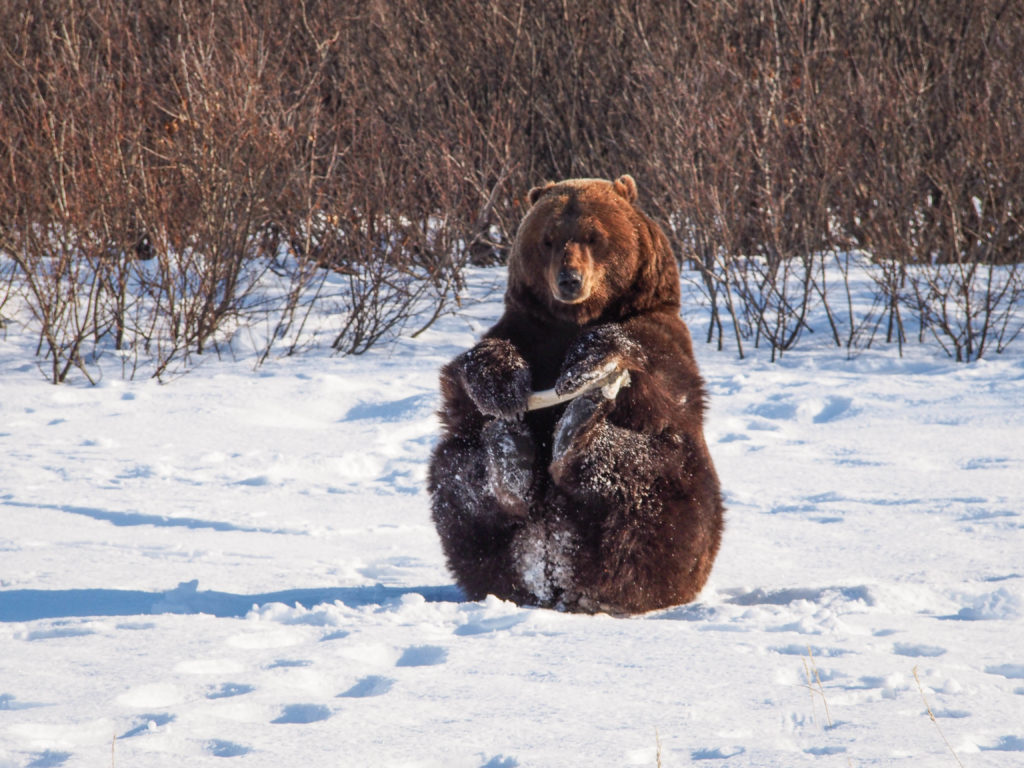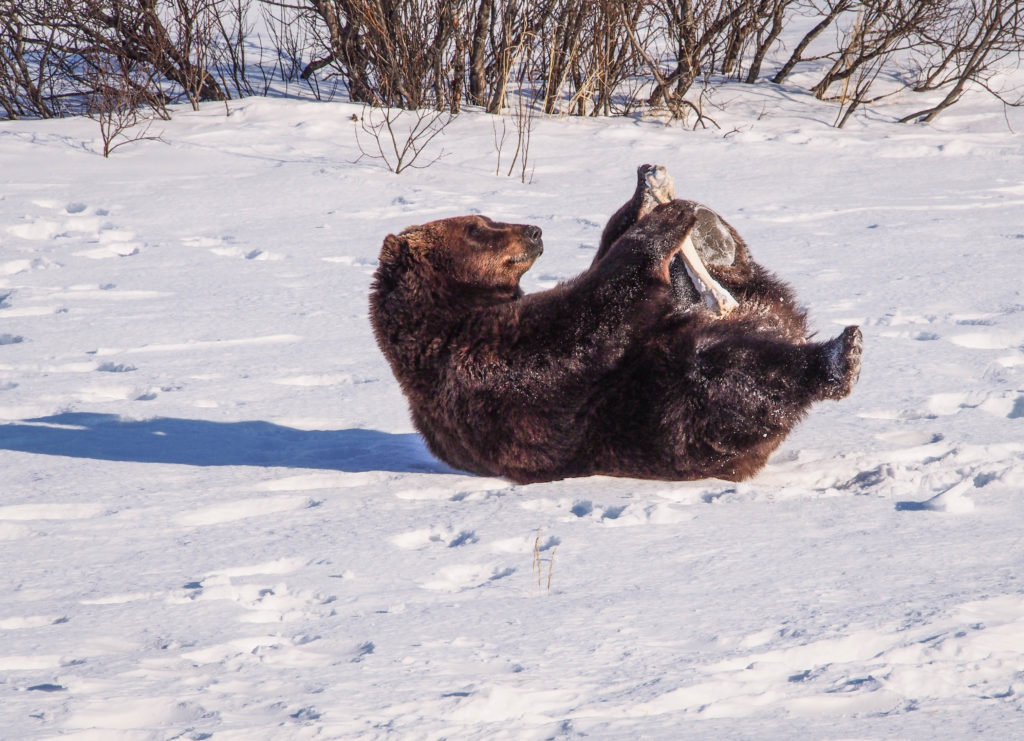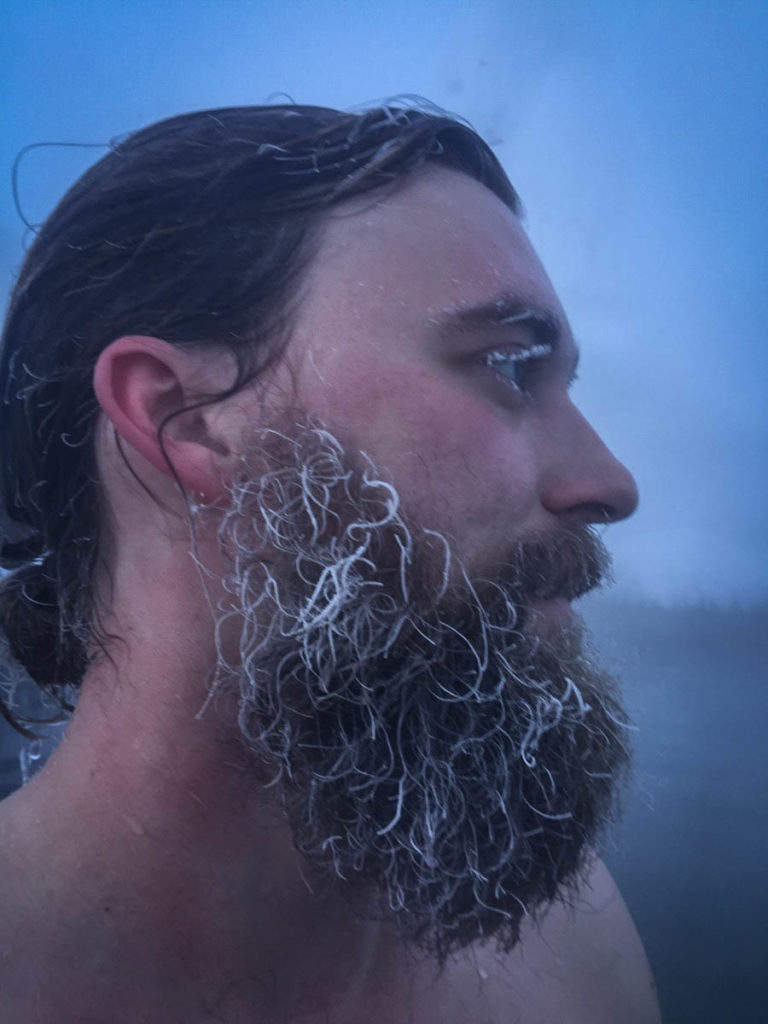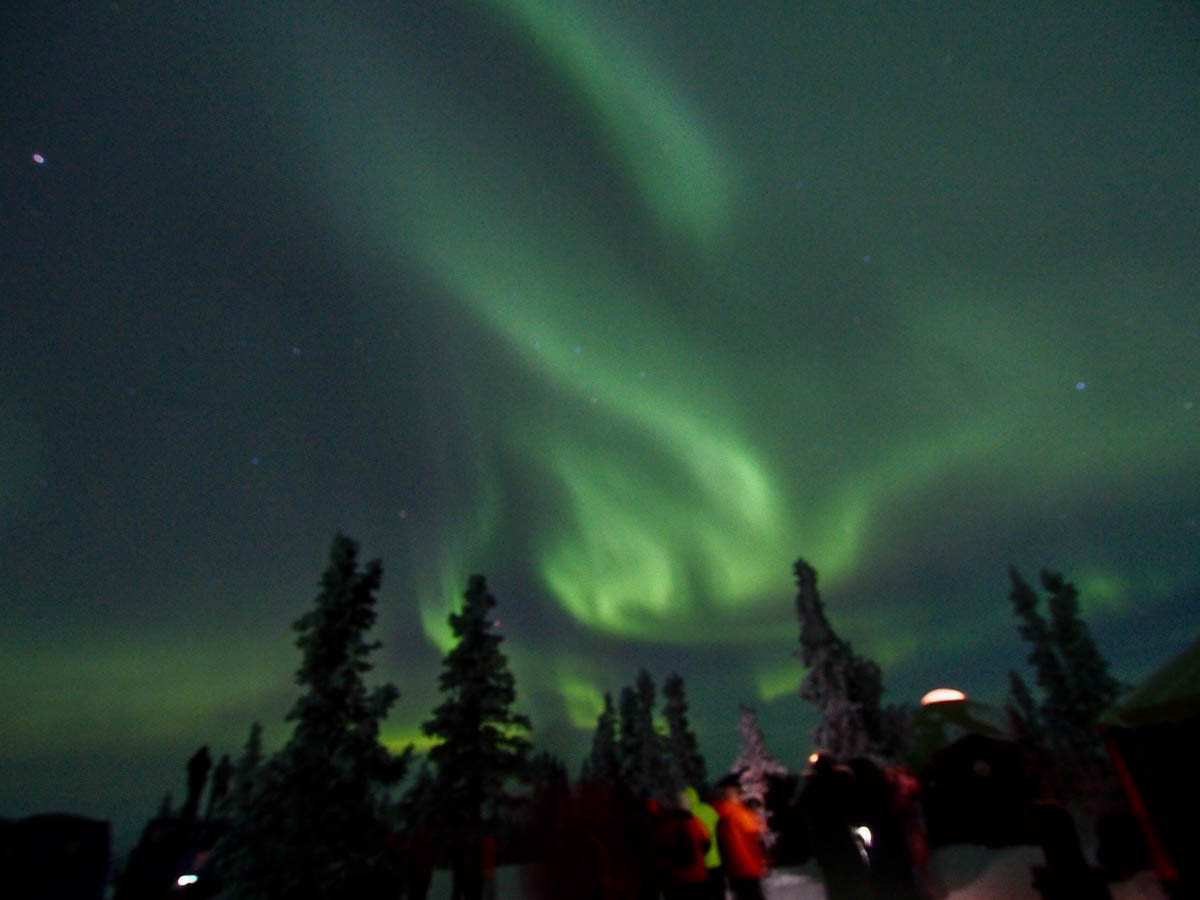This is a guest post by seasonal traveler James Morran.
I’m currently reading James Michener’s extensively researched and nauseatingly cloying novel, Alaska. Tracing the Alaskan lineage back from pre-history, he explores the heritages that constitute Alaska as the state we know – Eskimo, Athapascan, Russian outcasts, explorers, and merchants, and the continental gold-seekers from the U.S.

A few days ago I was reading of belated prospectors dogsledding across the Yukon River to reach Fort Yukon, near the site of the gold find. Michener depicts the struggles and hardships of the journey by detailing the mileage traveled, the death toll, and the economic impact of owning a mine that doesn’t produce.
He conveys the cold beyond dictating what it is – 30 below – by juxtaposing the outfits of John Klope, a prospector from Idaho, and Sanquq, a native Alaskan, half-Eskimo, half-Athapascan. The American dressed as such wearing heavy equipment – thick jacket, thick pants, thick boots, thick gloves. The Alaskan layered himself in several light animal skins – water resistant, durable, warm, flexible.
Reading of these men’s dash through the near-arctic tundra and the measures they took to stay warm at night – tilting a sled against the wind and snowdrifts, digging holes into the snow for both dogs and humans to conserve heat, building fires with wet wood or in high winds, etc. – I thought, Wow, these were real men. Tough bastards. Hardy survivors.
These descriptions help but do not really convey the feel of being out in 30 below. I can’t help but wonder as I read, how do their fingers work? Without snowblinders, how do they stand the sunlight reflected off the snow? Do their toes not get brittle? After a night of sleep how do they get their fingers nimble enough to do all the work of setting up a dogsled?
How do their fingers work? How do they stand the sunlight reflected off the snow? Do their toes not get brittle?

It happened coincidentally that Chena dropped to 36 below as I was reading these passages and navigating the property here. Walking from my housing to the Activity Center, where I work, or the EDR or dining room can be a scenic affair. I try to use every building to my advantage and will even go out of my way for the chance to walk through 15 feet of warmth.
I leave my steps and trudge through the un-to crudely-packed snow to avoid having to walk longer in the cold the packed way. I veer through the geothermal generator hangar, actually expeditious, and egress with a straightaway to the Activity Center and everything else.
I always enter the Activity Center via the back door, whether I’m heading there or not. The laundry, cafeteria, restaurant and pool are the opposite way. Regardless, I always go through the Activity Center.
The pretense has become that I’m checking the Aurora forecast board or the SUS-V schedule, so I generally pause to look toward these things but I really just came through to escape the cold for 30 seconds. I often leave the front door of the Activity Center and duck a quick right into the Administration building where I can climb the stairs and walk the hallway to the kitchen. This way is slower than walking a few feet farther down and climbing the stairs that lead directly to the EDR door, but it’s warmer, too. I’m rather a pansy in the weather, and reading of Michener’s heroes instills this in me thoroughly.

I am not one of Michener’s hardy heroes. I came to Alaska by plane and stay in a geothermally heated cabin. I do experience the Alaskan winter inferno every day though, and I have had hardships of my own. Here’s one experience that became recurring that I think illustrates this.
The other day I did something with my [genitals] I’ve never done before, nor have heard of anyone in history ever doing. After two snowmachine tours in 36 degrees below zero (don’t need to specify which scale because they’re the same when the temperature is that low) I stumbled into the Activity Center.
I stumbled because my knees felt as if they’d been dipped, nay, dunked, in liquid nitrogen and what were individual toes had become a solid mass of ice. I fumbled with the guests’ gear, practically tossing it into a heap in the equipment closet, and ran/hobbled off to one of the less frequented toilets in the back.
Once inside I positioned myself in front of the hand-dryer and frenetically ripped off my gloves and did a jig as my numb fingers attempted to negotiate the ordinarily facile zipper. Frozen genitals exposed, I turned on the hand-dryer and sought its warm embrace.
Alaska chronicles hardships of all kinds, but I don’t remember this particular struggle in the 1000+ pages.
The first obstacle I found to thawing my frozen [genitals] with a hand-dryer was the distance. Wearing boots, I’m 6’0 on a day that I feel like exaggerating an inch. In the average height range my pelvis was too far from the blast of air to really feel its warmth. The obvious solution was to stand on my tip-toes.
The second obstacle was standing on my frozen tip-toes. Ballerinas practice standing on their toes – relevé – in beginner classes. I am not a ballerina. I cannot do that in my best condition. Needless to say, it’s exponentially more difficult on mittenfeet of ice attached to nerves on fire. In the beginning I did the best I could. I hopped, thrusted, prayed, stood on my boots, got creative. Eventually I learned it’s helpful to have a handkerchief for the express purpose of warming it, wrapping myself tenderly, and tucking in to thaw gradually over the next fifteen minutes. The added layer of cloth also helps contain the “winter drip*.”
This experience deepened my respect for those hardy men and women, pioneers of Alaska, who didn’t even have hand-dryers to thaw their genitalia.
*This refers to the phenomenon of leakage after emptying the bladder. Forcing warm urine through a frozen [male part] can be a painful experience. Getting most of it out, or even what you think is all of it, is a relief. As the [male part] warms up gradually, more drips out. Hence, the extra handkerchief helps absorb this. Do not reuse without washing. Wash regularly.

